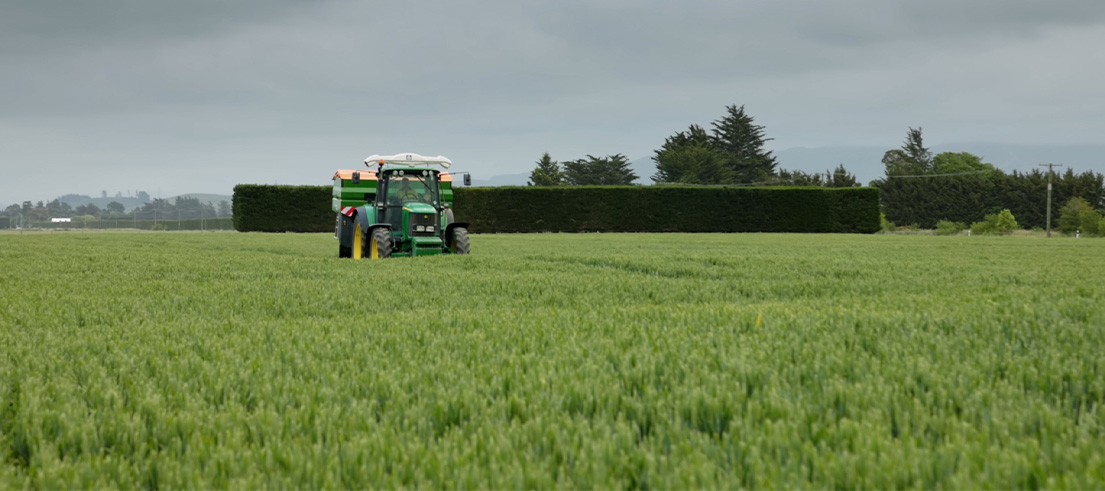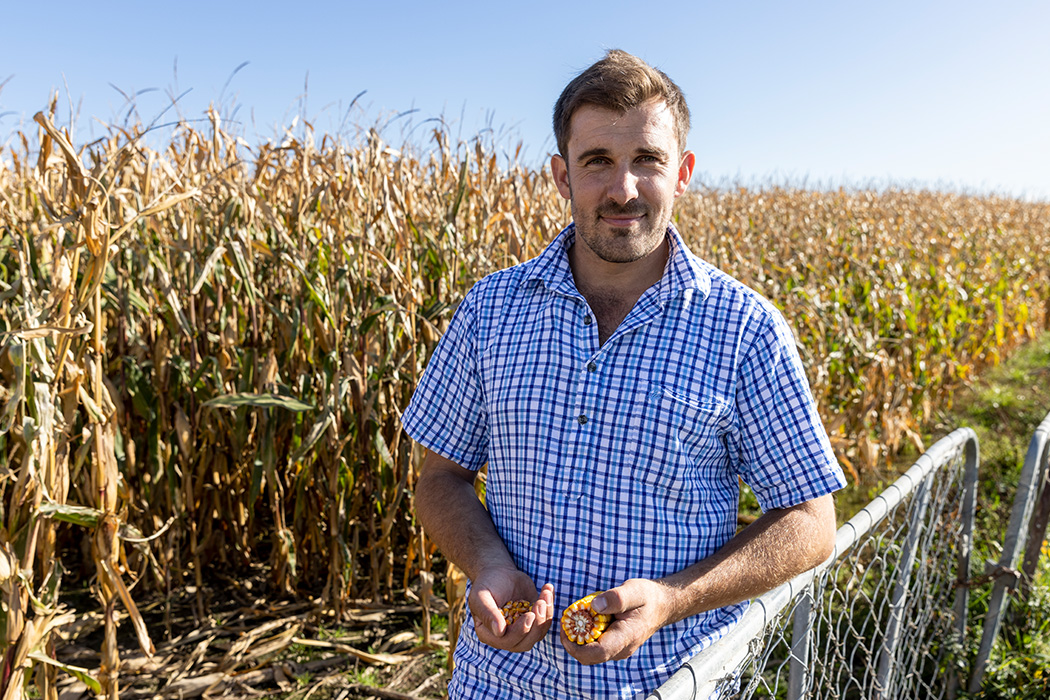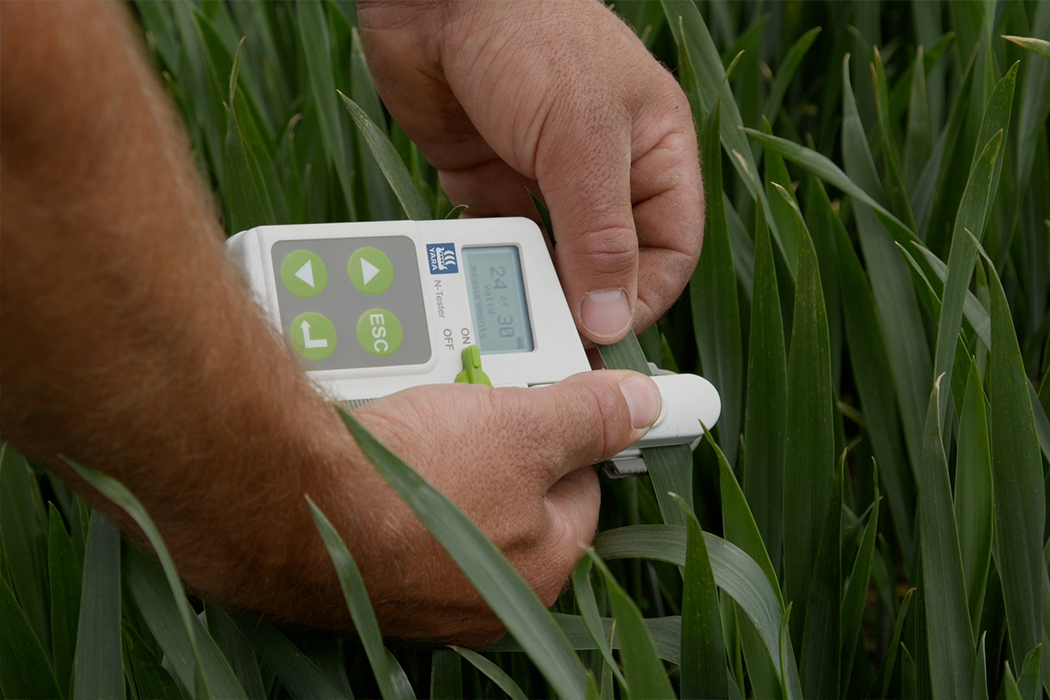
Farm viability improved through precision agriculture
Reduced input costs and nitrogen fertiliser use, along with improved environmental outcomes are key benefits realised by Roscoe Taggart over the last two years on his family's 730 hectare arable and sheep farm in Cust.
Roscoe has achieved greater efficiency through precision agriculture and the use of a new Yara N sensor during a Next Generation Farming project designed to help farmers meet tough nitrate caps while maintaining their viability. As part of this project, farmers like Roscoe are using innovation to demonstrate productivity and environmental benefits to their neighbours in the region and beyond.
Waimakariri Landcare Trust (WLT) and Waimakariri Irrigation Limited (WIL) have partnered with the Ministry for Primary Industries (MPI) for the project, with support from MPI's Sustainable Food and Fibre Futures fund along with Environment Canterbury, Ballance, and DairyNZ.
A mixed harvest season
As the harvest season draws to a close, Roscoe said this harvest has been a mixed bag due to wet weather conditions, however, his new maize for seed and evening primrose crops have provided positive results.
"At the beginning of harvest, we had really good results. Unfortunately, then the tap just turned on and we had huge amounts of rain coming through at the wrong time which cost quite a bit in terms of yield for the later crops.
"We have just harvested our evening primrose and it's been surprising to see how well it has done, especially for a paddock that was pretty wet early on. We've exceeded our target for the seed yield off it."
Roscoe tried maize for grain for the first time this year and he was pleased with how the crop went and will plant it again next season as it works well in his crop rotation and returns potassium to the soil.
"It’s a crop with nice deep roots so it breaks up the soil nicely and while it does require a bit of fert up front you end up returning a lot of K to the soil instead of removing it which is what happens if you grow it for sileage instead of for grain.
"It also works well because we harvest it in early June, so it extends the season out further which means we are harvesting from November through to June."
Reducing nitrogen fertiliser use
For Roscoe, one of the most important precision agriculture tools is his Yara N sensor which has allowed him to reduce his use of nitrogen fertiliser by approximately 80 kilograms this season.
"We have saved around three units of N per tonne of grain so on a twelve-tonne paddock you are saving 36 units of N per hectare which gives us an overall saving of 80 kilograms of urea for the season.
"It's been a game changer for us, especially using the N sensor in absolute mode, where the N sensor decides how much fertiliser to apply. We'll keep using it in absolute mode because it minimises our N use which is important not just in terms of cost savings but also environmental impact."
To further reduce his use of nitrogen fertiliser, Roscoe is learning about mineralisable N in the soil which is released from organic matter throughout the season.
"The soil itself can supply a good amount of mineralisable N and we just need to work out when the N in the soil will be available for the plant to use and we believe this will reduce our use of N fertiliser even further."
One thing that has surprised Roscoe over the last two years during the N sensor trial is the amount of variability he has throughout his farm.
"There's more variation in our relatively flat, uniform farm than I ever could have imagined and looking at the maps that come out of the N sensor there's no consistency in paddocks that before using the sensor I would have thought of as very consistent."
A new future for farming
Roscoe sees precision agriculture as critical in ensuring the future viability of farming in New Zealand.
"Precision ag makes your farm more efficient and there are some real social, environmental, and economic benefits that you don't realise until you get into this.
"I never thought too much about future generations until I had kids of my own and you want them to have the opportunity to farm where you farm. That's when you start looking around the place and thinking about how to make farming sustainable for the next generation.
"If I can leave this land in as good as or a better condition than I found it then I will be happy with what I have achieved."


